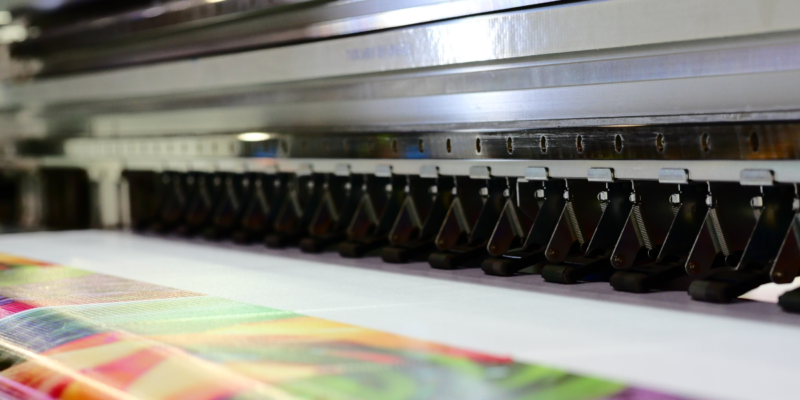In an era where technology evolves at an unprecedented pace, the concept of smart printers of the future is gaining significant attention. This idea is not just about upgrading existing machines but revolutionizing how we perceive and use printers. With advancements in artificial intelligence and the Internet of Things, printers are becoming more integrated, interactive, and intelligent. For marketing professionals, this evolution means more efficient and tailored printing solutions, reducing costs and increasing productivity.

Understanding Smart Printers
Before diving into the future, it is essential to understand what makes a printer ‘smart.’ Essentially, a smart printer leverages advanced technologies to perform tasks beyond traditional printing. These devices are designed to connect with other smart devices, allowing seamless integration into the digital ecosystem. Features such as wireless printing, voice activation, and cloud connectivity are becoming standard, enhancing user convenience and functionality.
Technological Innovations
The driving force behind smart printers of the future includes several technological innovations:
1. Artificial Intelligence
AI enables printers to learn from user behavior, optimizing printing tasks and maintenance schedules. Predictive maintenance can reduce downtime and extend the lifespan of the printer, offering a significant edge to businesses.
2. Internet of Things (IoT)
The IoT allows printers to communicate with other devices in a network. This connectivity facilitates automated supply ordering and real-time monitoring of printer status, contributing to operational efficiency.
3. Cloud Printing
With cloud printing, documents can be sent to printers from anywhere, at any time, enhancing flexibility. This feature is particularly beneficial for remote work environments, which are increasingly prevalent.
Impact on the Printing Industry
The emergence of smart printers is poised to transform the printing industry dramatically. According to Xometry, these innovations are expected to lead to more sustainable practices, reducing waste and energy consumption. Additionally, the precision offered by smart printing technology ensures higher quality outputs, crucial for industries requiring detailed and accurate prints.
Benefits for Marketing Professionals
For marketing professionals, the capabilities of smart printers offer numerous advantages:
1. Customization
Smart printers allow for highly customizable printing options, enabling marketers to tailor materials to specific audiences more effectively. This customization aids in creating targeted campaigns that resonate better with consumers.
2. Cost Efficiency
By optimizing resource usage and reducing waste, smart printers can significantly lower operational costs. Automated supply management also means fewer interruptions and more consistent output.
3. Enhanced Creativity
The advanced capabilities of smart printers open new avenues for creative expression, allowing for the production of intricate designs and interactive print media that engage consumers more effectively.
Overcoming Challenges
While the potential of smart printers is vast, there are challenges to consider. Integrating these advanced systems requires investment and training. Additionally, cybersecurity is a concern as more devices become connected to the internet.
Looking Ahead
The future of smart printers is bright, with continuous advancements on the horizon. As the technology matures, we can expect even more intuitive and capable devices that will continue to reshape the printing landscape. For marketing professionals, staying updated with these trends will be crucial in leveraging the full potential of these innovative tools.
The Role of Sustainability
As highlighted in green printing, smart printers contribute to sustainability by minimizing waste and using eco-friendly materials. This not only benefits the environment but also aligns with the growing consumer demand for sustainable practices.
Integration with Other Technologies
Smart printers are increasingly being integrated with other technologies like augmented reality, providing interactive print experiences. This integration offers a new dimension to marketing campaigns, making print media more engaging and effective.
1. Augmented Reality
By incorporating augmented reality, printed materials can come to life, offering users an immersive experience. This technology is particularly useful for educational materials and promotional content.
2. Virtual Reality
Virtual reality applications in printing are still emerging, but future possibilities include creating virtual environments where printed designs can be visualized in 3D before they are produced.
Industry Applications
Smart printers have applications across various industries, from retail and healthcare to education and entertainment. Each sector can benefit from the enhanced capabilities and efficiencies that smart printers provide.
Conclusion
The evolution of smart printers represents a significant milestone in the printing industry. As these devices become more sophisticated, they offer unparalleled opportunities for customization, efficiency, and creativity. For marketing professionals, embracing these advancements will be key to staying competitive in a rapidly changing landscape. With ongoing developments, the future of printing looks promising, innovative, and more integrated than ever before.

FAQs
1. What makes a printer ‘smart’?
A smart printer utilizes advanced technologies like AI and IoT to perform tasks beyond traditional printing, offering features such as wireless printing, cloud connectivity, and voice activation.
2. How does AI benefit smart printers?
AI enables smart printers to optimize printing tasks and maintenance schedules by learning from user behavior, thereby reducing downtime and improving efficiency.
3. Are smart printers environmentally friendly?
Yes, smart printers contribute to sustainability by minimizing waste and using eco-friendly materials, aligning with the growing consumer demand for sustainable practices.
This article contains affiliate links. We may earn a commission at no extra cost to you.






